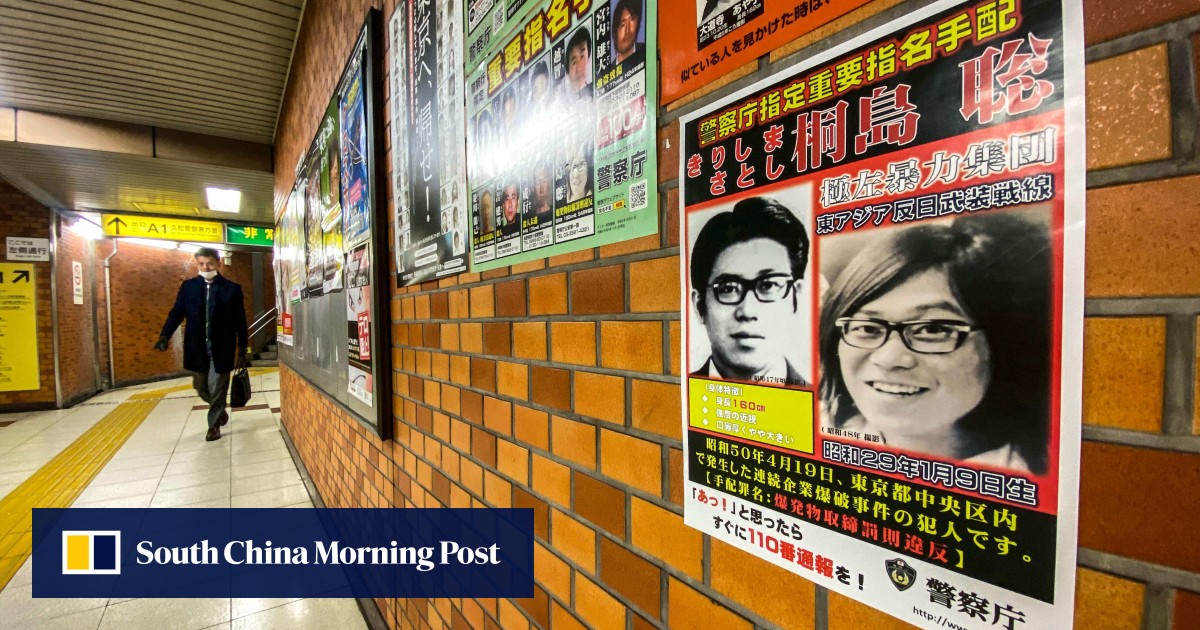Four days before he died, hospital staff in Japan were shocked when the man they knew as Hiroshi Uchida claimed that he had been using a pseudonym and was, in fact, Satoshi Kirishima – a radical wanted in connection with a series of deadly bombings in Tokyo during the 1970s.
Police were reportedly still conducting DNA tests to confirm whether the man was indeed Kirishima when he died on Monday morning. But one police source was quoted by the Asahi newspaper as saying “there is a very high possibility that this individual is actually Kirishima”.
Since the man’s death, police have been trying to piece together a timeline of Kirishima’s life for the last 49 years and asking how he could have managed to evade both a nationwide dragnet and a bureaucracy with a reputation for maintaining meticulous records on Japanese citizens.
‘I feel empty’: man gets death sentence for killing 36 in Japan arson attack
‘I feel empty’: man gets death sentence for killing 36 in Japan arson attack
Analysts were surprised that Kirishima could have managed to avoid arrest for such a long time, although they agreed it was possible, given that a number of other criminal suspects managed to avoid Japanese law enforcement for many years, including some who are still on national wanted lists.
Kirishima was likely to have maintained his freedom by severing links to family and friends as soon as he went on the run, they said, although he would almost certainly have to have been aided by individuals who shared his radical political beliefs; maintained a low profile by taking on a new name; and stayed out of official records by taking steps such as working cash-in-hand construction jobs, never getting a driving licence and paying cash whenever he visited a doctor.
If testing confirms that the man was Kirishima, it would prove that it is possible to beat the bureaucracy and disappear into one of Japan’s teeming cities, serving as encouragement to the 12 other men who are currently listed alongside Kirishima on the National Police Agency’s most wanted list.
Shinichi Ishizuka, founder of the Tokyo-based Criminal Justice Future think tank, said many aspects of the case would be shocking if the man turned out to be Kirishima, not only in how he was able to avoid the police for so long, “but also that he decided to stay in Kanagawa prefecture, which is only an hour by train from where the bomb attacks took place in 1974”.
Ishizuka told This Week in Asia that the only way Kirishima could have eluded authorities is if he “received assistance immediately after it was clear the police were searching for him”.
“Left-wing student organisations in the 1960s and 70s had networks of supporters, and they would have hidden him until the situation had calmed down.
“Others would then have helped him change his identity and obtain work until he was accepted as ‘Hiroshi Uchida’ where he chose to live,” said Ishizuka, who is also the former director of the criminology research centre at Kyoto’s Ryukoku University.
While nothing has yet to be confirmed about Kirishima’s life on the run, police have confirmed details of his life up until the crimes for which he was being sought.
Born in Hiroshima prefecture, Kirishima later moved to Tokyo and attended Meiji Gakuin University, where he joined the East Asia Anti-Japan Armed Front.
Kirishima was allegedly part of the extremist group’s “scorpion” unit, tasked with carrying out its anti-capitalist campaign of terror.
Police allege that he planted and detonated two bombs outside the central Tokyo offices of Mitsubishi Heavy Industries Ltd on August 30, 1974, killing eight people and injuring 380 more.
Nine people were arrested for the attacks and several other members of the group fled overseas, but there were no indications Kirishima had been able to leave the country and he vanished.

The Asahi newspaper reported that in the early 1980s, a man claiming to be Hiroshi Uchida started working for an engineering company in the coastal town of Fujisawa, southwest of Tokyo, where he lived in a company flat. The owner of the firm told the Asahi that “Uchida” was well-liked among his colleagues, had a good sense of humour and loved listening to music.
Owners of a number of local businesses – including a bar, a public bath and a restaurant – described him as quiet and gentle. They added that he never discussed politics and expressed shock that he was wanted in connection with bombings nearly 50 years ago, particularly as Kirishima’s mugshot was frequently posted outside local police stations – but repeatedly overlooked.
Japan’s subway sarin attack doomsday cult Aum Shinrikyo ‘still a threat’
Japan’s subway sarin attack doomsday cult Aum Shinrikyo ‘still a threat’
If Kirishima’s identity is confirmed, he will earn a certain notoriety for having eluded Japanese authorities for such a long time. However, there have been several other cases of criminals who were caught or turned themselves in after spending years on the run.
They include Tatsuya Ichihashi, who managed to avoid police after killing Lindsay Hawker, a 22-year-old English teacher, in March 2007. Ichihashi used knives to alter his facial features and worked construction sites in Osaka under an assumed name. He was only captured in November 2009 and sentenced to life in prison in 2011.
Another example is Katsuya Takahashi, the last fugitive member of the Aum Shinrikyo cult, who was arrested in June 2012 shortly after he fled his dormitory room at a construction company in Kawasaki City. Takahashi, who was wanted for his involvement in the cult’s sarin gas attack on the Tokyo subway system that killed 13 people in March 1995, also used a false identity to avoid authorities.


